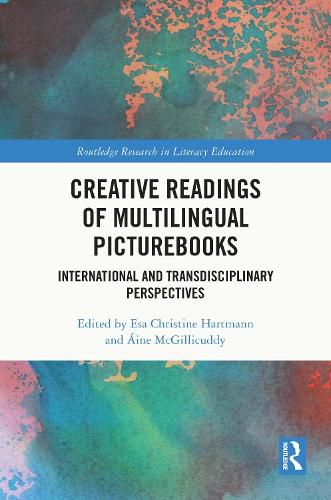Readings Newsletter
Become a Readings Member to make your shopping experience even easier.
Sign in or sign up for free!
You’re not far away from qualifying for FREE standard shipping within Australia
You’ve qualified for FREE standard shipping within Australia
The cart is loading…






This edited volume offers fresh perspectives on linguistic and cultural diversity in multilingual picturebooks, examining their potential to support multilingual learning in different educational contexts. Drawing on international, transdisciplinary perspectives from over fifteen countries, the book provides a comprehensive view of this unique literary genre.
The collection showcases a wide range of languages featured in multilingual picturebooks, including Chinese, Farsi, Georgian, Irish, Korean, Malagasy, Mexican Indigenous languages, Mirandese, Northern Sami, Portuguese, Spanish, Te Reo Maori, Ukrainian, and Welsh. Various chapters examine how multilingual picturebooks foster language and literacy development for emergent bilinguals in multilingual and multicultural environments, highlighting benefits such as linguistic and semiotic code-switching, as well as their ability to stimulate intercultural awareness in readers. The book also considers the creation, translation, and complex publishing processes of multilingual picturebooks, while exploring modern technologies such as eye tracking to analyse the reading processes of these books.
Reflecting current insights and innovations in picturebook research, this volume will appeal to scholars, academics, and researchers in language and literacy education, multilingual education, and early childhood education. Those involved in children's literature studies, multimodality, and bilingualism more broadly will also find this collection valuable.
$9.00 standard shipping within Australia
FREE standard shipping within Australia for orders over $100.00
Express & International shipping calculated at checkout
This edited volume offers fresh perspectives on linguistic and cultural diversity in multilingual picturebooks, examining their potential to support multilingual learning in different educational contexts. Drawing on international, transdisciplinary perspectives from over fifteen countries, the book provides a comprehensive view of this unique literary genre.
The collection showcases a wide range of languages featured in multilingual picturebooks, including Chinese, Farsi, Georgian, Irish, Korean, Malagasy, Mexican Indigenous languages, Mirandese, Northern Sami, Portuguese, Spanish, Te Reo Maori, Ukrainian, and Welsh. Various chapters examine how multilingual picturebooks foster language and literacy development for emergent bilinguals in multilingual and multicultural environments, highlighting benefits such as linguistic and semiotic code-switching, as well as their ability to stimulate intercultural awareness in readers. The book also considers the creation, translation, and complex publishing processes of multilingual picturebooks, while exploring modern technologies such as eye tracking to analyse the reading processes of these books.
Reflecting current insights and innovations in picturebook research, this volume will appeal to scholars, academics, and researchers in language and literacy education, multilingual education, and early childhood education. Those involved in children's literature studies, multimodality, and bilingualism more broadly will also find this collection valuable.